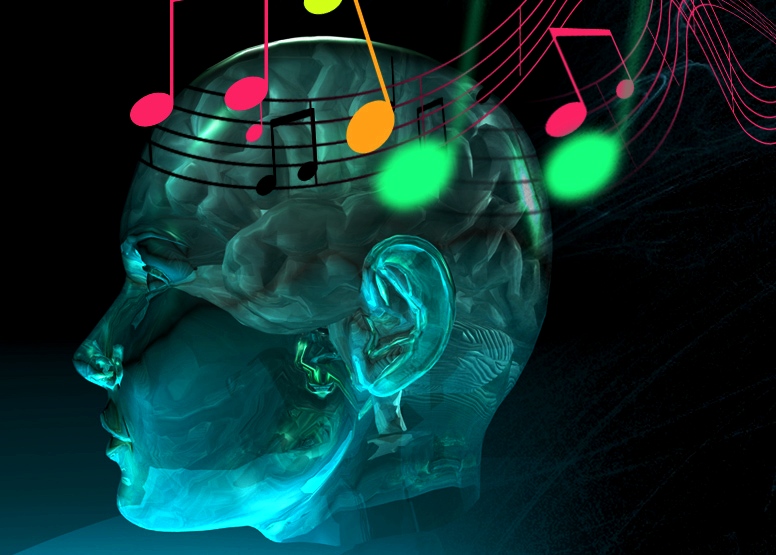Effective Ears: a 10 minute Active Listening Workout

Effective Ears: a 10 minute Active Listening Workout
“I frequently hear music in the heart of noise!” — George Gershwin
Being able to listen critically to a piece of music is an essential skill for any aspiring musician! Even before we can play a piece of music we should hear everything there is to hear in that piece! Whether or not we can reproduce it note for note or beat for beat, we should be able to tell what makes that piece unique like no other. Some call this Active or Critical Listening, to distinguish from listening to music simply to relax or entertain or just just shut oneself from the world around.
Active listening offers the following benefits to a student learner:
- Learn quicker
- Avoid common mistakes
- Play phrases that are more authentic to the style
- Improvise and be creative more naturally
The reason is listening is inherently a brain oriented activity: our ears are conduits that take the sound data to our brains. The actual processing happens in the brain to decide whether it is noise or music; opera or heavy metal; guitar or violin playing; major or a minor scale! Both recognition (when listening) and response (when playing) happen via same circuits in the cerebellum. Research has shown that critical listening creates the pathways that are activated during playing an instrument.
In continuation of the previous blog (https://www.manoke.com/blog/practice-smart-musical-workout/), let us see how we can spend 10 minutes or so in a day to actively listen to a piece of music.
What to Listen For:
Rhythm changes/Tempo
One of the first and perhaps the easiest things that even untrained ears respond to is the pulse/tempo. That’s why babies can rock back and forth in time (more or less) when they listen to a song. To get a sense of the tempo, listen for the downbeat (the first beat of every bar). Depending on the style of the music this may be prominently heard (as in pop music) or felt (as in classical). The other thing to listen for are the off-beats also referred to as syncopated beats. Syncopation is what makes us dance to a song.
Chord progression
Whether we are playing as part of a rhythm section or we play solo pieces (sections) it will help if we are able to follow the chords through the piece. The chord progressions are what defines the melody. Several common types of progressions are used in popular music. For purposes of this exercise we want to develop ears for detecting and becoming familiar with this concept and not get into deep theory.
Dynamics
While the tempo provides some basis for the mood of a song (e.g fast tempo generally connotes excitement) the full spectrum of emotions needs dynamics: from pianissimo (very soft) to fortissimo (very loud) the notes are sprinkled throughout the song, to create and sustain the mood.
Bassline and root notes
Last but not the least, listen to is the root note of the chords which provides the bassline, the foundation for most musical arrangements. This could be a bit challenging for a beginner ears but with practice it becomes easy to discern. In addition, following the bassline also helps hone in on the rhythm and feel of the song.
Example: Let it Be (a song by the Beatles):
- Listen to the song once or twice before continuing to read this blog. You can find a version here:https://www.last.fm/music/The+Beatles/_/Let+It+Be
Count along (1-2-3-4) in tempo and lock in on beats 2 and 4. These provide the “backbeat” for the song. You can hear it on the snare when the drum part comes in later in the song. And if you listen even more carefully you can also hear a slight open hi-hat on 2 and 4 making the backbeat more interesting. - It is a relaxed song. So count slowly and hear the silence in between the phrases.
- Now try to pay attention to the chord progression. It has two basic progressions of four measures each. Can you hear the different chords and when they change? Both the verse and chorus use the same 4 chords (C,G,Am,F) switched around a bit. Can you hear them? This is a very commonly used progression called I V VI IV of C-major scale. Can you recall any other song using this progression?
- Next listen to the bassline when it comes in: it just plays the root note of each chord. Very simple!
- What dynamics do you hear in the song? Does it have swells, crescendos (going up in volume) or diminuendos (going down in volume)? Can you find the loudest and the softest sections?
Now with this understanding and listening can you try to play the song on your instrument and notice the difference?
To help with you with this blog post here is link to a video tutorial that shows you might be able to approach this technique:
https://www.youtube.com/watch?v=caN75fUSKiU
Every day you can work on a song you play or a song you like to play by first doing a critical listening. And then trying to play the song with that understanding. There are a number of resources such as the National Association for Music Education (nafme.org) or https://www.mutopiaproject.org. that we can find on the internet to choose melodies based on what we know. The Manoke App (www.manoke.com) also has a number of lessons and tracks for beginners to practice. So what are we waiting for?